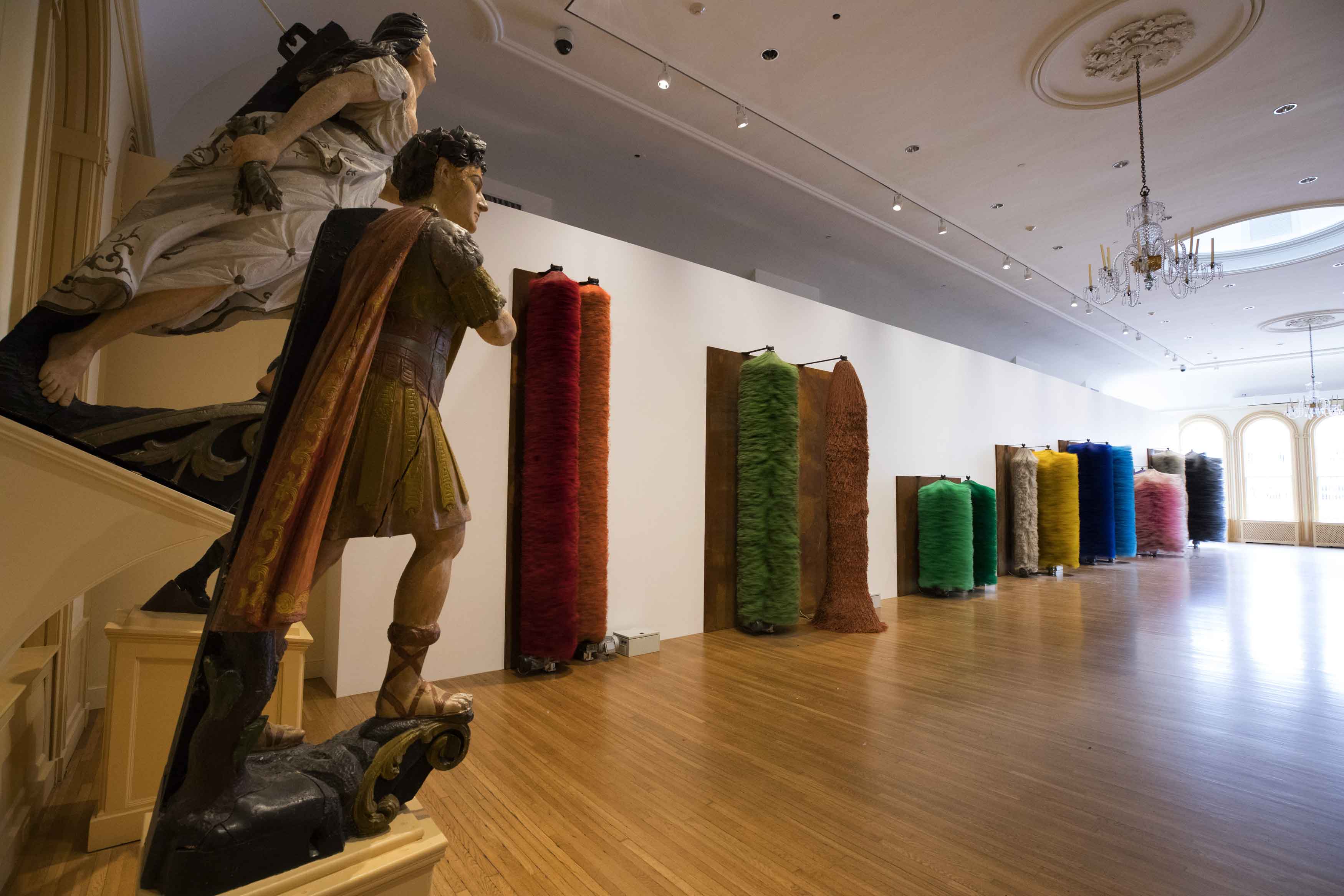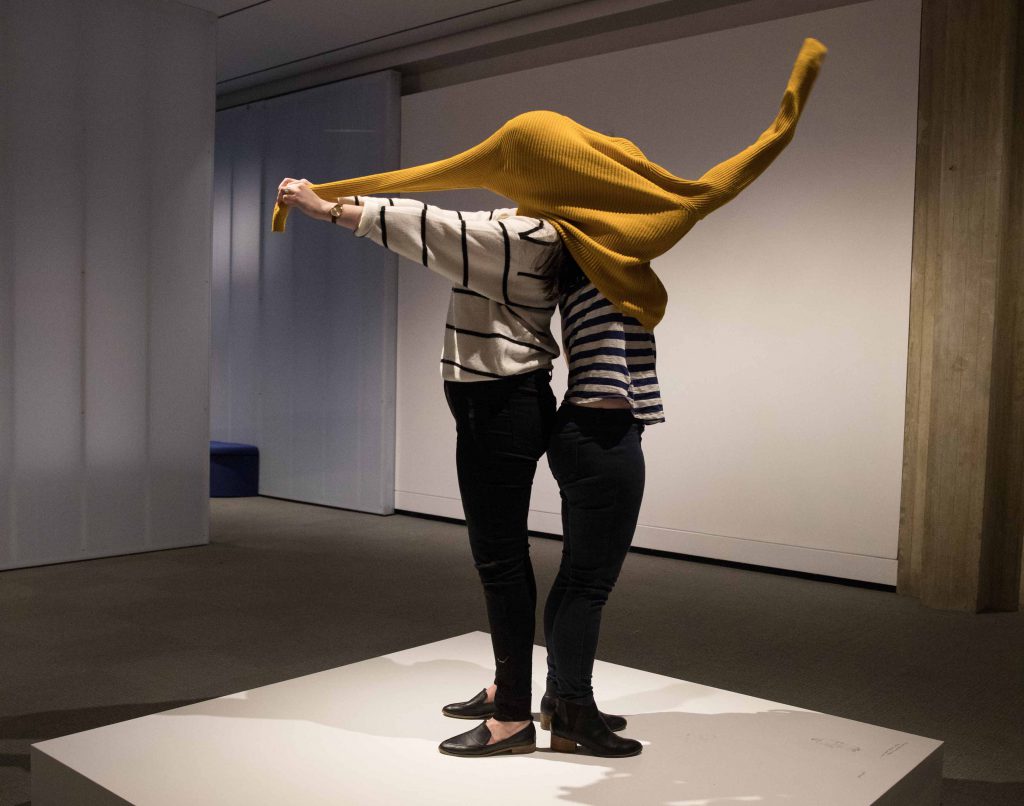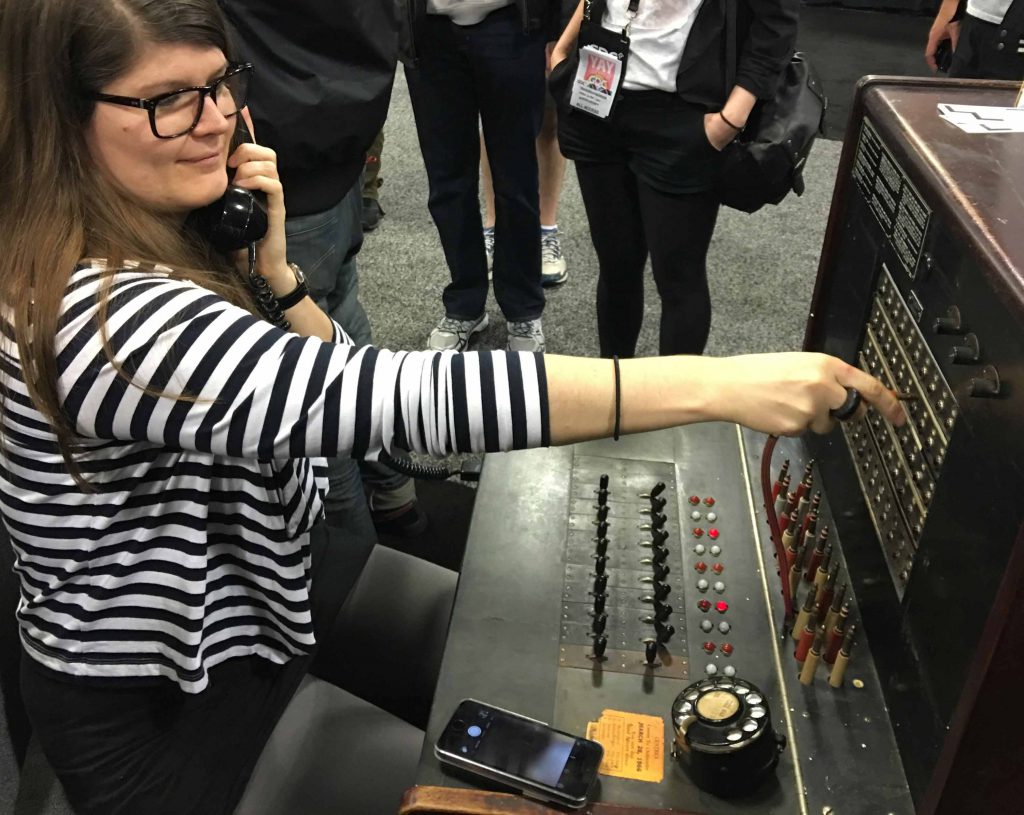Using two very different approaches to materials, artists Cao Fei and Lara Favaretto both look at the absurdities of contemporary life. From the deeply digital to the industrial mundane, here’s a little more about how these two PlayTime artists look at life and play.
Artist Cao Fei had her first major museum retrospective at MoMA PS1 at the age of thirty-seven. In PlayTime, we present two pieces in which the artist finds playful responses to technology and humanity—giving life to machines or swapping mechanical precision for humanity. As curator Trevor Smith puts it, she is riffing on the idea that if “technology could free us from labor, we’d all have more time to play.”
Much of Fei’s digital-cinematic work revolves around video game imagery, cosplay, and the assignment of avatars in our lives, and she emphasizes the transcription of abilities onto other forms. She sometimes refers to her characters not just merely as avatars, but as “interpreters.”
She is no stranger to more conventional notions or sources of play, either. After having children and being immersed in the mindless anthropomorphism of everything from flowers to trains, her appreciation of children’s notions of play led to the making of the film East Wind starring a truck (manufactured for collecting trash by Dong Feng, or “east wind”) modeled on Thomas the Tank Engine and follows it as it drives Beijing’s highways and collects onlookers at fuel stops (he also gets pulled over by the police).
More recently, Cao has been selected by BMW as the latest creator for its Art Car project—the first Chinese artist to do so—premiering this week at Art Basel Hong Kong.
Lara Favaretto makes work comprised of a dry sense of humor and an exploration of art through the scrim of industrialized society—often combining the two: disintegrating cubes of paper confetti; a room of oxygen tanks triggering tiny party favors into action; and, of course, the showpiece of PEM’s East India Marine Hall, Coppie Semplici / Simple Couples, which uses car wash brushes to celebrate absurdity and comment on the mundanity of contemporary life. She says of her work and chosen materials: “I select objects that add parallel lives to my installations, objects that already have a history, especially those that have been submitted to various kinds of energy, power, and weather conditions—all agents that intervene on the materials that compose each artifact.”
Last summer, two of Favaretto’s installations sparked commentary: at Skulptur Projekte Münster, she installed the next in her Monument series, the sculpture Momentary Monument – The Stone—“marked with a deep slit into which visitors can throw their spare change”—which raised over $30,000 for people facing deportation. In Nottingham, Thinking Head had Nottingham Contemporary neighbors calling the fire squad!
Check in next week for a new roundup of the latest play news and stories.
(Image credit: Photo by Allison White/PEM.)












